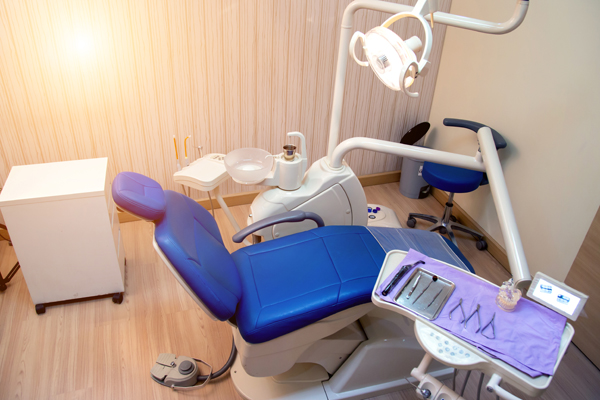How Many Types of Dental Sedatives Are There?

Nobody enjoys going to the dentist, so there are dental sedatives. They administer these dental sedatives for something as simple as a teeth cleaning or something as extensive as oral surgery. But, it is something that has come a long way in a short time. Being scared of the dentist or a dental procedure shouldn’t be an excuse for neglecting your teeth. You can read more about dental sedatives
here. They are a very easy way to get comfortable with seeing your dentist more. This will enable you to give your teeth the attention they need. While some matters seem like they are just aesthetic problems, you should think about how the corrections will improve your oral health.
Dental Sedatives: Levels
There are different levels of dental sedatives. You wouldn’t use the same level for a root canal as teeth cleaning. But, it can be hard to know the difference; when someone is talking to you about them.
- Minimal sedation is when you are awake, but the sedative relaxes you. This might be for someone who has a mild fear of a procedure or some slight anxiety about seeing the dentist. It is unlikely that you will realize when it hits you, but if you do it won’t be an impairing difference.
- Moderate sedation (sometimes known as “conscious sedation”) is one that will leave slurred speech and maybe some confusion. But, you will not remember the procedure afterward.
- Deep sedation is when you are barely conscious. You can regain consciousness, but won’t feel or understand much. You certainly won’t remember anything when it is all over and will likely need a little recovery time.
- General anesthesia is the big one. This is when you are unconscious. You will not feel or hear anything. It is unlikely that you will be able to until the anesthesia wears off, which might be a good thing. This tends to be the treatment you receive when undergoing a more complicated procedure.
Dental Sedatives: Types
- Local Anesthetic. Generally a local anesthetic is given with these dental sedatives. This is a medication that will numb the area of your mouth the dentist will be working in. It is meant to relieve any pain or discomfort. Caused by the procedure.
- Inhaled minimal sedation. This is where you inhale nitrous oxide combined with oxygen. Commonly known as “laughing gas,” this mixture is delivered through a mask. It goes over your nose as you breath deeply . It will help you relax but does wear off quickly. Your dentist can control the amount administered. This is the only of the dental sedatives that allows you to drive yourself home after the procedure.
- IV moderate sedation. This delivery involves an IV administering it directly into your vein. That quickens the process and offers more comfort for the patient. The dentist also has better control over the dental sedatives. They are able to adjust the levels continuously throughout the procedure.
- Oral sedation. Ranging from minimal to moderate, the total dose given is administered through a pill. It is typically a Valium relative called Halcion and is taken about an hour before the procedure. The pill causes drowsiness, but you will be awake. The dose range depends on the procedure and the patient’s reaction to it. It can be a way of controlling the level of sedation, as well. The stronger the dose, the deeper the sedation. These dental sedatives are the ones most typically associated with sedation dentistry. There are people who become sedated enough to fall asleep during the procedure, but they wake very easily.
- Deep sedation and general anesthesia. These dental sedatives are meant to cause unconsciousness or very close to it. Think of it as a deep sleep that you cannot be easily awaken from. This typically means that you have to wait for the sedative to wear off or it is undone through the administration of another medication. That is good for someone who is undergoing oral surgery or a procedure that can become very painful.
Your teeth are more than an addition to pretty pictures. Being able to chew food properly assists digestion and aids in overall oral health. While some dentistry might seem cosmetic, it is actually an investment in your oral health. It will be helpful to speak to someone about what the procedure is and what options are available for the corrections you want. You need to find someone with experience and knowledge. You can start your search
here. Don’t be afraid to talk to them and be sure to ask about sedatives if you are nervous. They will be able to tell you what can be done to make you the most comfortable and what the effects after will be. Soon, you’ll be comfortable seeing your dentist and smiling bright!
 Nobody enjoys going to the dentist, so there are dental sedatives. They administer these dental sedatives for something as simple as a teeth cleaning or something as extensive as oral surgery. But, it is something that has come a long way in a short time. Being scared of the dentist or a dental procedure shouldn’t be an excuse for neglecting your teeth. You can read more about dental sedatives
Nobody enjoys going to the dentist, so there are dental sedatives. They administer these dental sedatives for something as simple as a teeth cleaning or something as extensive as oral surgery. But, it is something that has come a long way in a short time. Being scared of the dentist or a dental procedure shouldn’t be an excuse for neglecting your teeth. You can read more about dental sedatives 
